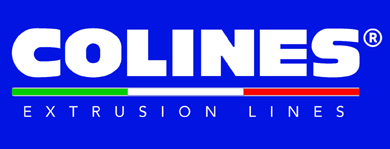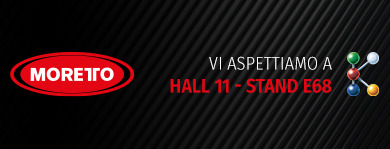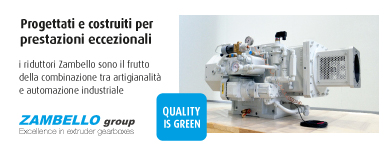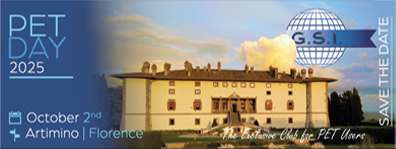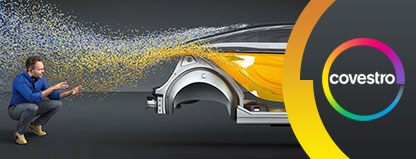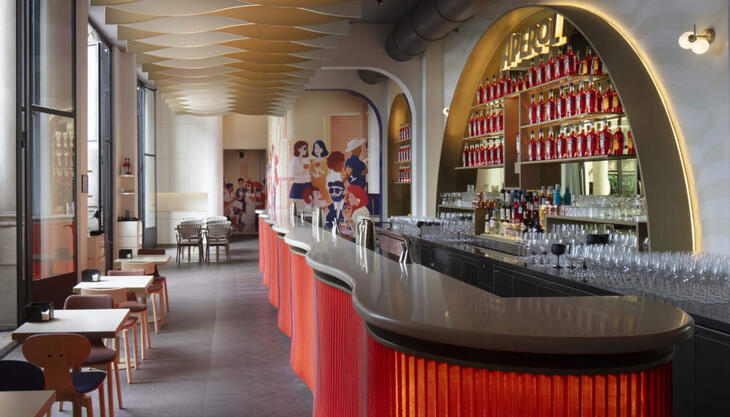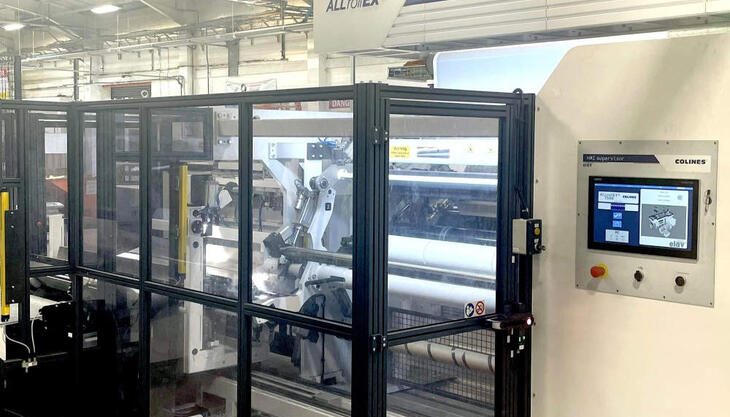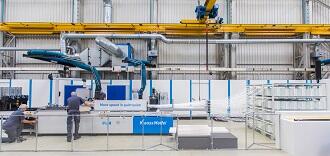
At the Competence Day Pultrusion on June 28, KraussMaffei presented iPul, the first complete system for continuous pultrusion. "It is the easiest way of producing profiles, there are hardly any turnkey offers, and it is a growth sector. In addition, we are knowledgeable about fibres, metering technology and even about extrusion". Thus Nicolas Beyl, president of the Reaction Process Machinery business area of the KraussMaffei Group, described the motivation of KraussMaffei to enter the pultrusion sector when he welcomed the guests. Already at the JEC trade show in Paris, the new iPul complete system had aroused great interest, and at the Competence Day, approx. 220 visitors took the chance of experiencing it live. Presentations by development partners and raw material manufacturers and a "speed dating" between experts and prospects rounded out the program.
In pultrusion, continuous fibers - usually of glass, carbon or aramide - are infiltrated with a reactive plastic matrix and formed to the desired profile in a heated mould. Grippers pull the cured profile continuously and feed it to a sawing unit. The new iPul system by KraussMaffei encompasses this entire sequence and revolutionizes the technology, which has been common for a long time, in two respects. It encapsulates the infiltration of the fibres, which so far mostly takes place in open vessels, in an injection box, which permits the use of fast-reacting systems (epoxy, polyurethane, polyamide 6). And it increases production speed from the usual 0.5 to 1.5 meters per minute to approximately 3 meters per minute. With this, efficiency approaches the extrusion of PVC, which opens entirely new markets to this technology. The widespread interest was mirrored by the composition of the attendees. Four of the ten largest practitioners of pultrusion in the world came to Munich, as did manufacturers of sporting goods and windows and automakers.
Wolfgang
Hinz and Daniel Lachhammer, the pultrusion experts at KraussMaffei, recollected
in their presentation the development of the iPul system over the past one and
a half years, and they also explained its name: "The “i” in iPul stands
for injected, innovative, integrated and industrialized, that are the core
features of our system".
The subsequent presentations by development partners shed light on interesting partial aspects of pultrusion. For instance, Klaus Jansen of Thomas Technik discussed manufacturing curved and irregularly formed profiles. Here it became obvious why the two companies complement each other so well. The pleasure of developing perfect solutions even for niche applications meets industrial competency, orientation toward efficiency, and worldwide marketing. Renato Bezerra from the Fraunhofer IGCV presented the research capabilities of his institute in Augsburg, and Stephan Constantino from Huntsman even went "airborne" with pultrusion. The company collaborates with KraussMaffei in solutions for wind power plants. Wladimir Richter from Evonik explained examples from the construction industry. In a sandwich pane facade, the use of pultruded glass fibre reinforcement (instead of steel) saved a lot of concrete because it was permitted to keep the concrete layer significantly thinner (10 to 15 millimetres) than prescribed by the standards for corroding reinforcements (40 mm). Benedikt Kilian of Covestro explained in his presentation the advantages of polyurethane compared to earlier matrix materials such as polyester (inferior mechanical properties) and competing processes such as extruded aluminium (lower insulation capabilities and geometric stability).





